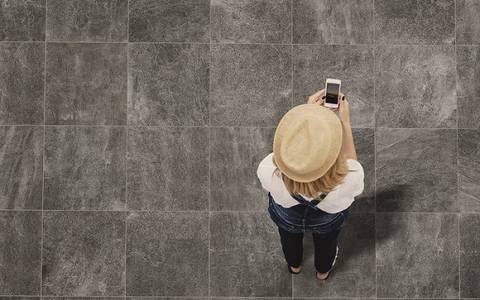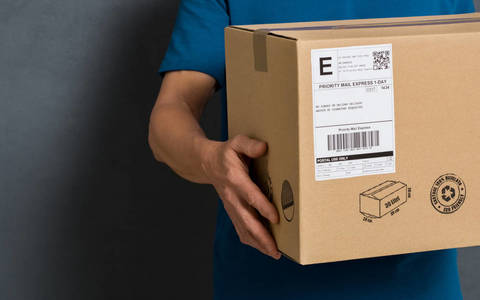WORKING WITH INTERNAL TILES
 Nation wide delivery
Nation wide delivery Quality Slate
Quality Slate Made to Measure
Made to Measure
See the tools, materials and maintenance products you will need to install your new slate tiles and how to fit them flawlessly
Tools for the Job
The tools required for your slate flooring installation are outlined below, they are the
basic items you will need for your project.
For prepping
- Kango demolition bolster hammer 10kg-110v (available to hire from your local hire
- shop, to remove any old flooring tiles the easy way)
- Lump hammer & bolster chisel (to remove any old flooring tiles the hard way)
- Scraper (to remove any old bitty materials)
- Small sponge painters roller (to apply bonding agent)
For mixing
- Mixing bucket for adhesive & grout (if not using ready mix)
- Paddle mixed & drill (the easy way to mix adhesive)
- Mixing stick (the hard way to mix adhesive)
For cutting
- Small diamond blade wet cutter (available at DIY stores for no more than £30) Or 6 inch hand grinder with diamond blade
- Dust mask
- Safety goggles
For Fixing
3/8 inch notched trowel (for spreading adhesive)
- Small trowel
- Chalk line
- Tape measure
- Crayon
- Pencil
For Grouting
- Rubber float
- Clean bucket
- Big sponges (preferably tiling sponges not car washing sponges)
For sealing
- Cloth (old tee shirt) (to apply sealer)
Taking Delivery
Unpacking & mixing slate tiles
Follow the steps below & you will achieve a better looking floor for your efforts. Upon delivery of your new slate tiles, I recommend that all tiles are taken out of their packaging/boxes and stacked vertically against a wall. If you have chosen tiles that are heavy in variation then I suggest that they are sorted in to their appropriate color/mix variation, You may end up with 5 or 6 different piles but this is good, it is better to sort the colors now for your slate flooring installation rather than to lay them without sorting & have a floor that has not been blended very well, this can be disappointing to see after completion & to be honest it doesn't take very long to do.
Once you are ready to begin your slate flooring installation, I suggest that you lay your tiles according to the selections you have & blended the tiles well, try to mix the tiles in evenly as you go, making sure that when you come to the last few tiles in each stack, you have an equal number left according to how many was in each stack to begin with.I suggest that you do a dry run to familiarize yourself with the overall color variation & to get a feel for the thickness & spacing of each tile, time spent here will save you from rushing when you start to apply your tiles with the adhesive, Any mistakes can easy be rectified at this stage, as once adhesive is mixed you will only have so long to use it.
A little tip
Another way of making your slate flooring installation easier would be to grade your tiles by thickness, This can be easily done by the eye & I would suggest that once this is done that you start to lay your tiles with the thickest first, this will create a much flatter floor with no raised edges from tile to tile on completion of your slate flooring installation. Do not worry about the dust surface of your slate tiles as you are laying them, this can be removed/cleaned after installation on to your adhesive.
Preparation
Removing old flooring
You may have to begin by removing old floor tiles to reveal the substrate beneath it, this would be the perfect situation for most floors prior to your slate flooring installation. If you have to remove an old floor prior to your slate tile installation then you must ensure that the under layment is solid, not crumbling or deteriorating in anyway, if the sub floor looks in a bad way then I suggest you seek the advice of a professional builder before laying a single tile. Once your old floor has been removed, check that the floor‟s surface is level, dry & free of grease, oil & dirt.
Tile to existing flooring
If however you decide to lay on top of an existing tiled floor then you will have to make sure that it is solid, clean & that bonding agent is applied prior to fixing, it also advised to use a flexible adhesive & grout to account for any future movement which may occur. You may have to resize any existing doors to account for the additional raise in the height of the floor.
The sub floor
Concrete
When installing on to a new concrete base you must allow 1 week drying time for every 1 inch of concrete. Most new concrete bases are to rough to allow for thin set beds of adhesive, most new build floors are finished to a smooth finish so thin setting will not be a problem.
Sand & cement screed
A fresh screed can shrink during drying which can create cracks, this can cause tiles to split if the screed has not been given enough drying time prior to slate flooring installation. Screeds can be applied UN bonded to a concrete sub floor & it is advisable to lay a polythene damp proof membrane under a standard 50mm screed which in turn will require 1 week for every 25mm of screed depth. Use an acrylic bonding & priming agent for maximum adhesion to your sub floor whether it is an old or new concrete screed.
Timber floors
When tiling on top of existing floors, i.e. Tongue & groove boards, it is best practice to use 15mm WBP (water boil proof) Marine plywood screwed down at 200-300mm, intervals, a more solid method would be to cross lay 9mm WBP marine plywood on a horizontal direction screwed down at every 300mm intervals & then overlay a second layer of 9mm WBP marine plywood vertical direction screwed done again at 300mm intervals, this method is recommended for floors that tend to have more flex within the overall floor. It is also advisable to leave a small gap between each sheet used to allow for expansion & also leave a small gap around the perimeter.
For areas that are prone to damp & moisture such as bathrooms & shower areas (especially shower enclosures), It is advised to use a tile backer board such as “no more ply”, this dimension-ally stable & water resistant and will not shrink or crack.
You must use a flexible adhesive & grout when laying on to a wooden surface.
Uneven Floors
Most old floors will have some bumps & dips, this can be overcome by applying more adhesive to the back of the tile at the time of your slate flooring installation, for more extreme & very uneven floors you should use a self leveling compound, this will bring these areas when installing.
It douse not constitute a full in depth document due to the extensiveness of a slate flooring installation. We have attempted to present "best practice‟ achieve the desired effect, whether a seasoned professional or an absolute beginner, for a more detailed technical report, reference can be made to British standard bs53385-5: 1994 wall and floor tiling.
This slate flooring installation guide outlines the basic principles of how to install slate flooring, It covers preparation, installation, sealing & maintenance for laying slate insides today‟s modern home.

